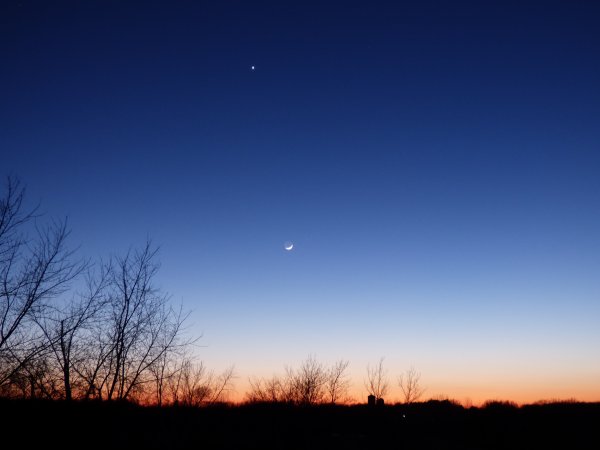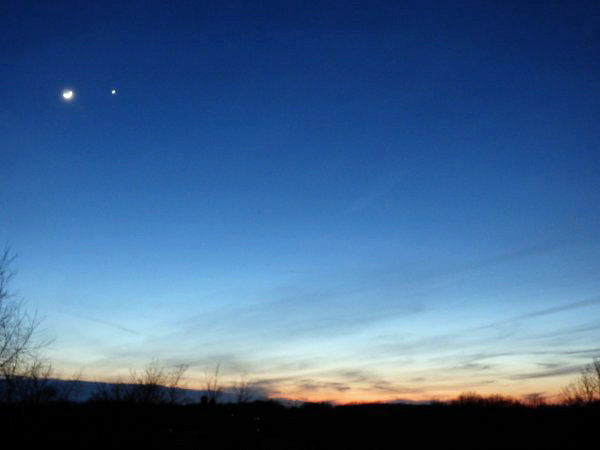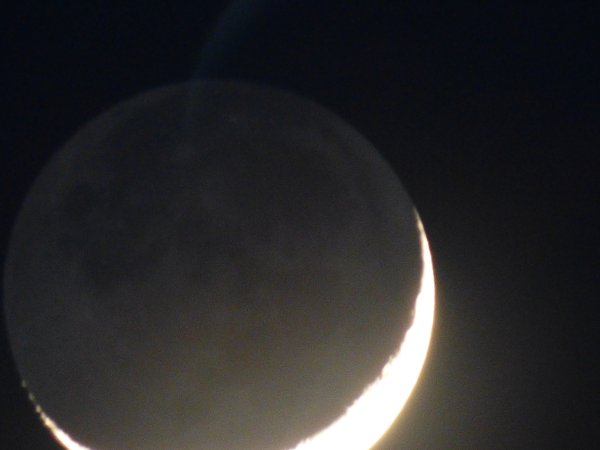You’ve probably noticed that the moon rises and sets later from one day (or night) to the next. I know it’s about 50 minutes by the clock, but what does that translate to in space? I had the chance to get an idea with two pictures.
The first I took on Saturday night. There was Venus and the moon hanging in the western sky.

Saturday after sunset — Will Venus catch the moon?
I was hoping for a cloudless Sunday evening. I wanted to compare the positions of Venus and the moon. How much closer would they be?

Sunday as Venus and the moon go hand-in-hand
In the second shot, the moon was so brilliant that it “bloomed.” It was only the second evening since the new moon, and only a tiny crescent was illuminated. Against a very dark sky it was too much contrast.
Here’s a fully zoomed-in shot of Sunday night’s moon. I only resized this shot and made no other changes.

The camera does not handle the very high contrast all that well. Perhaps there’s a mode to help with that? I still have much to learn. (In many ways.)

All my night pictures are that way. I apparently don’t have the patience to figure out how to use the features of the camera.
I’ve since discovered that there is an “exposure compensation” feature available in “P” (auto shutter & aperture) mode. I haven’t yet found the opportunity too try it.
I thought you got nice pics w/the camera! I like that last one especially.
I was surprised at that one.
I am sure that a camera with that quality lens will have a setting for you to set the f-stop down to prevent the glare. Nice pictures. Bob
That it does, Robert. It allows me to manually set the aperture and shutter speed. I’ll have to learn that before the next lunar shot.
“Much to learn”? Haven’t we all? I like your moonshots.
Thanks, Vanilla. I was told that it’s an old German proverb: “We grow so soon old, and so late smart.” :dunce: